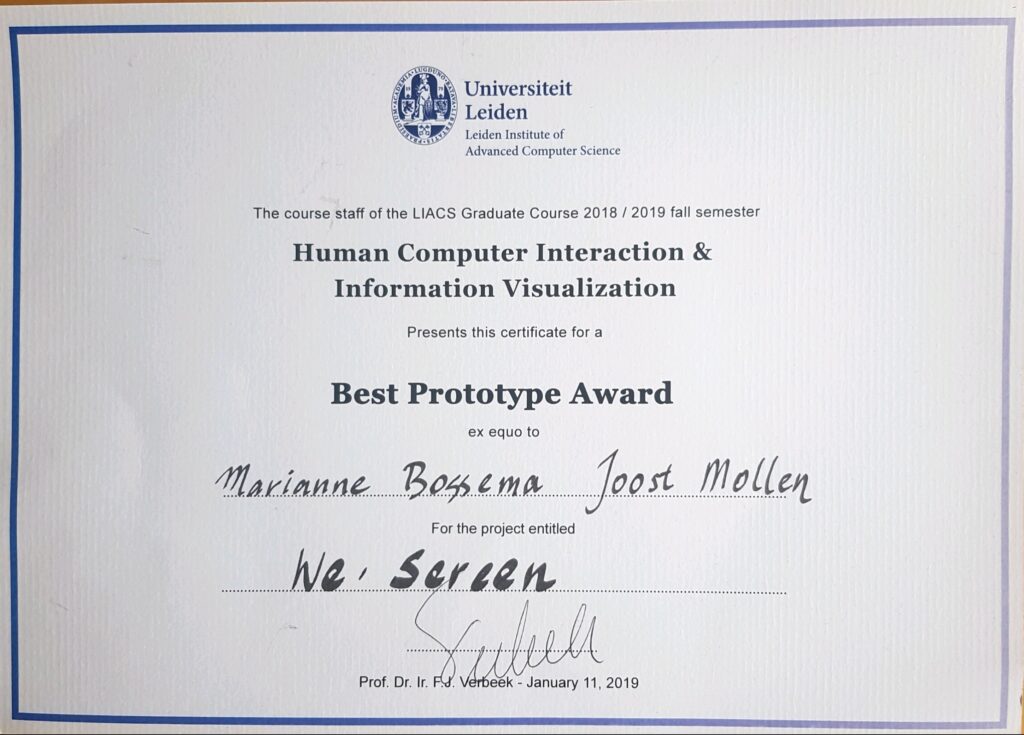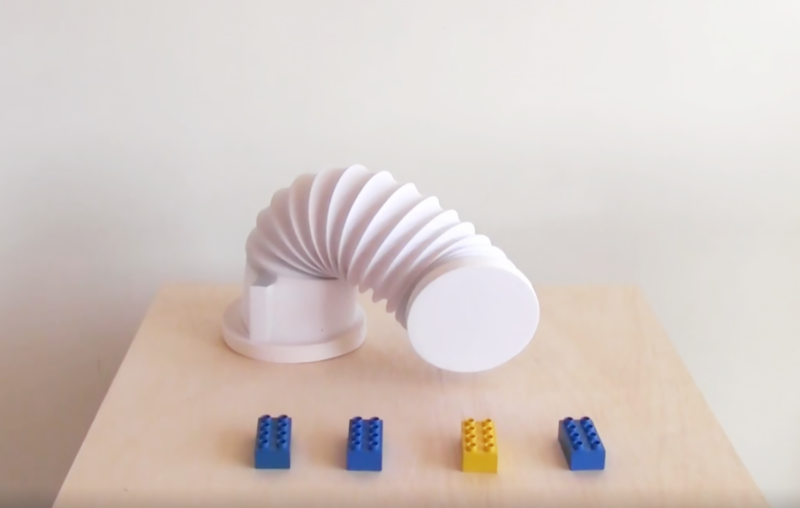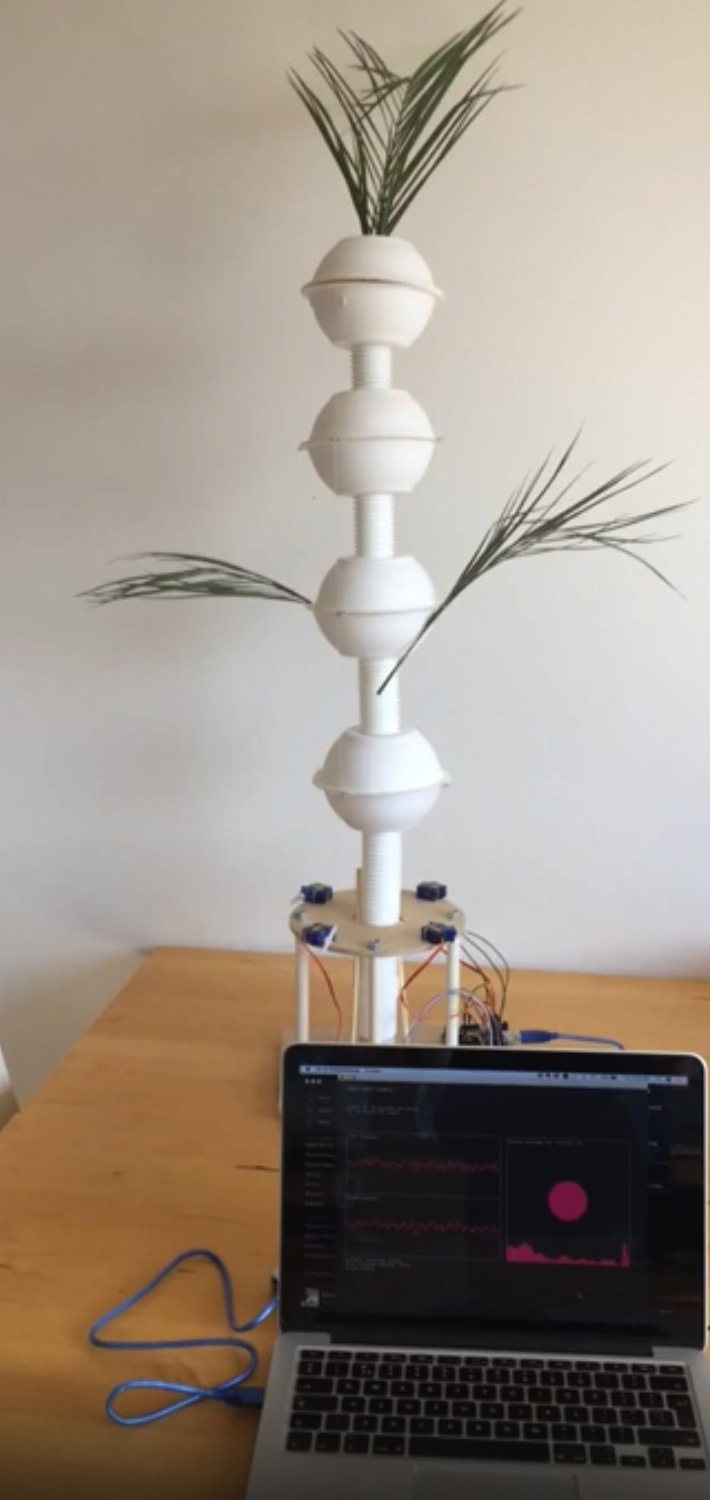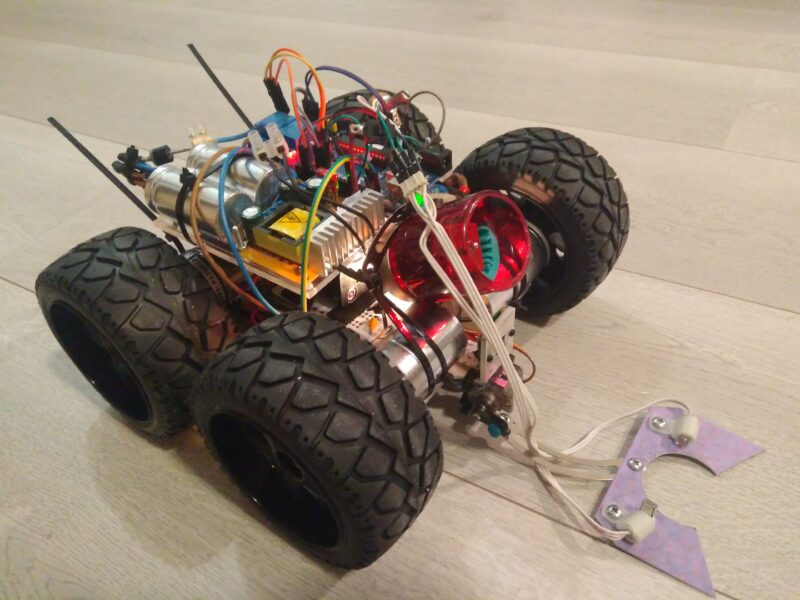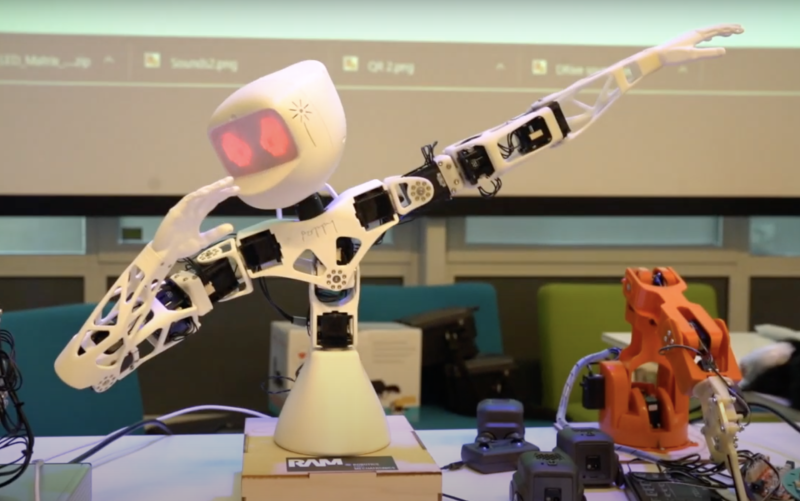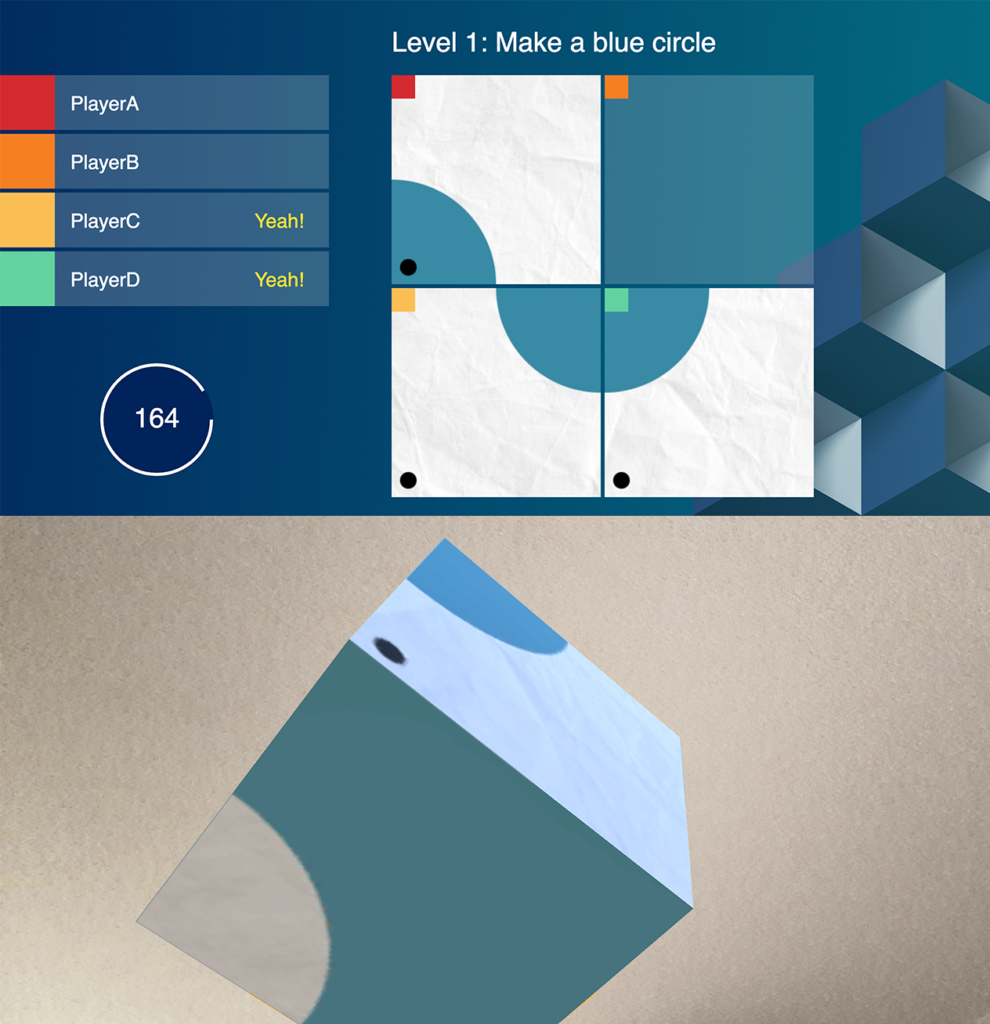
MSc. Media Technology – Human-Computer Interaction – Fall 2018.
In collaboration with Joost Mollen.
We.screen is a tool for spatial exploration and collaboration in a 3D AR puzzle game.
A large screen serves as the starting point of the game. It displays a text inviting players to join the game and giving instructions for the initial setup. When the app is launched, it will automatically connect to the multiplayer game server. First, the user logs in by choosing a player name and an avatar/colour to represent them. Once logged in and a game has started, they will be represented as players on the screen, showing their avatar. The main screen gives an overview of the game world and the status of the game.
Via the main screen players will be asked to solve a problem, and they can do so by exploring the room in AR using their smartphone. They have to move their smartphone to locate a rotating cubes. The cube sides display puzzle pieces. When a user taps on a puzzle piece, it shows up in his area of the puzzle on the main screen. When a user taps another side/puzzle piece, the overview screen automatically updates.
Users have their own personal view into the AR world, but share their part of the puzzle on the main screen, where everybody can follow progress. When a puzzle is complete: a new more difficult puzzle is presented. To increase difficulty, the number of cubes and their rotation speed can be increased and the puzzle pieces made more abstract in subsequent levels.
In our research, we will compare user puzzle solving performance between two settings, which makes the interface design only slightly different. In the first setting, users share a clear common goal to solve (e.g. the system tells them to make a circle). In the second, users share an ambiguous common goal to solve (e.g. the system tells them to make a circle or square and have to decide among themselves which approach they will choose). Subsequently, the difference in interface design between the two settings will only manifest in the central overview screen showing not one but several solutions.
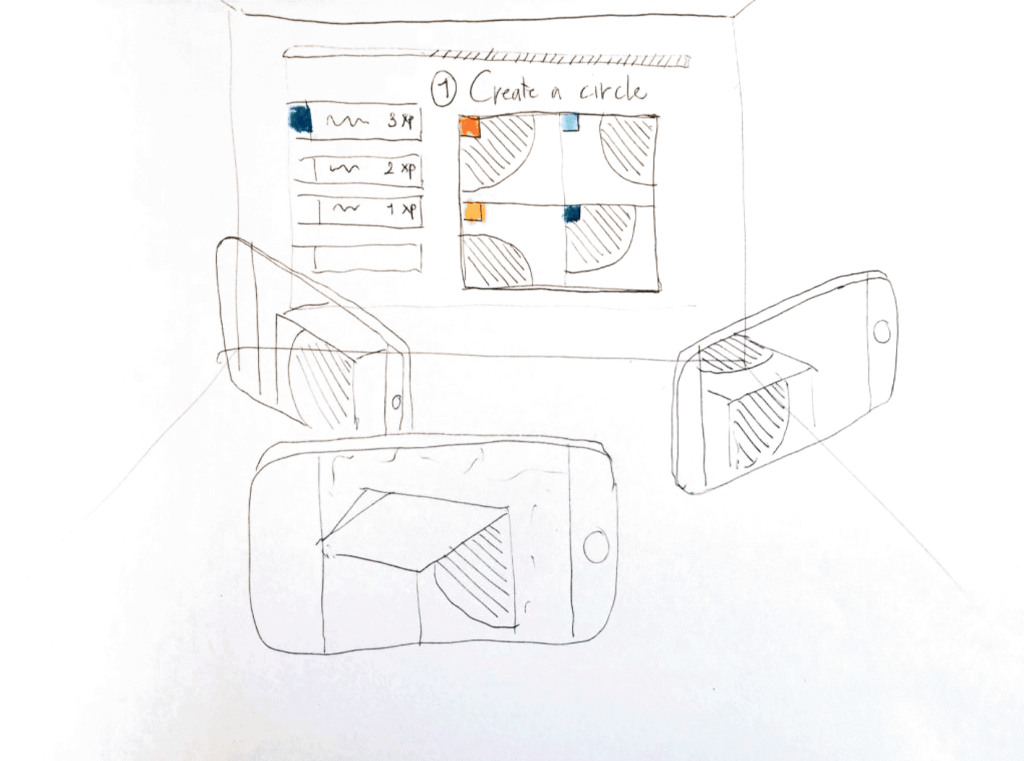
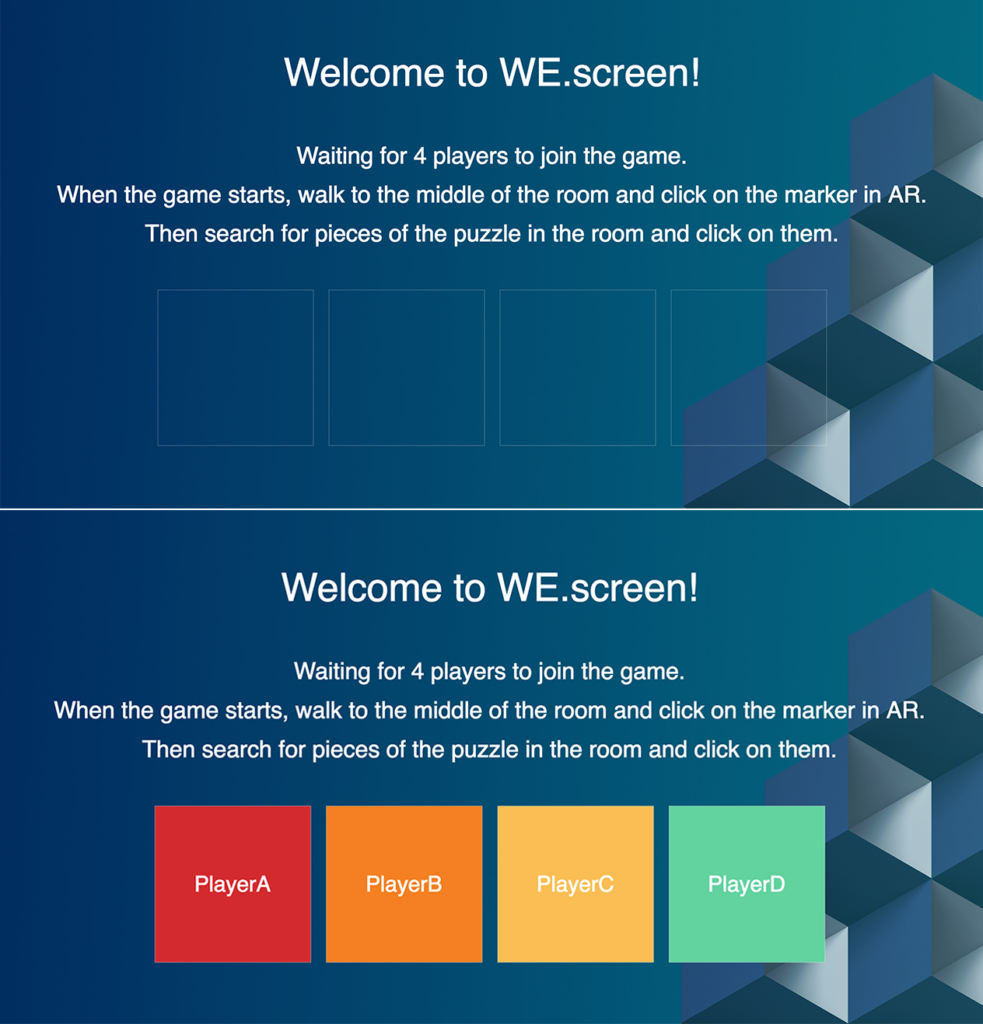
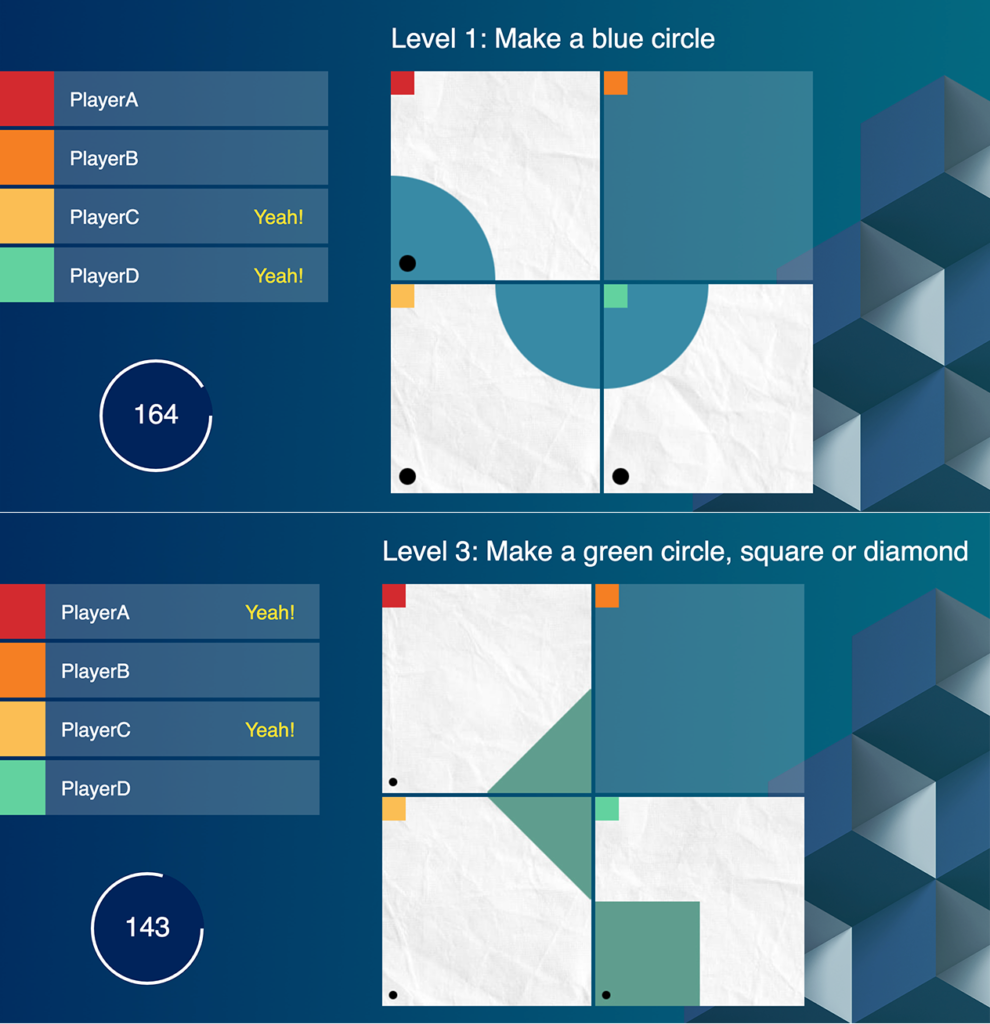
We.screen was assigned the Best Prototype Award in the course Human Computer Interaction & Information Visualization.
